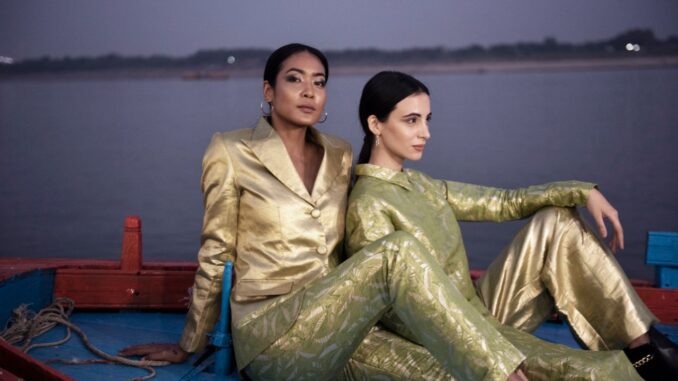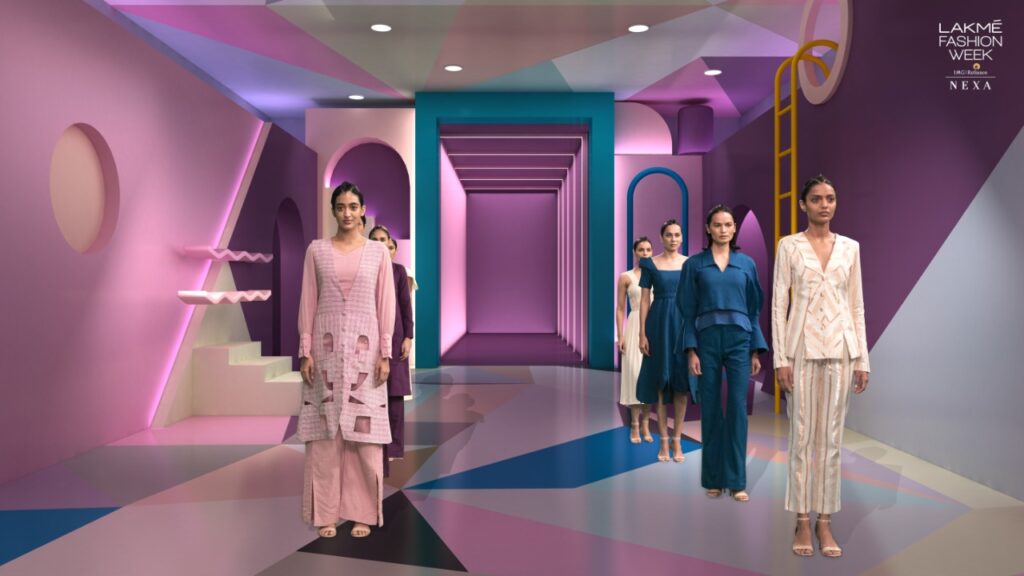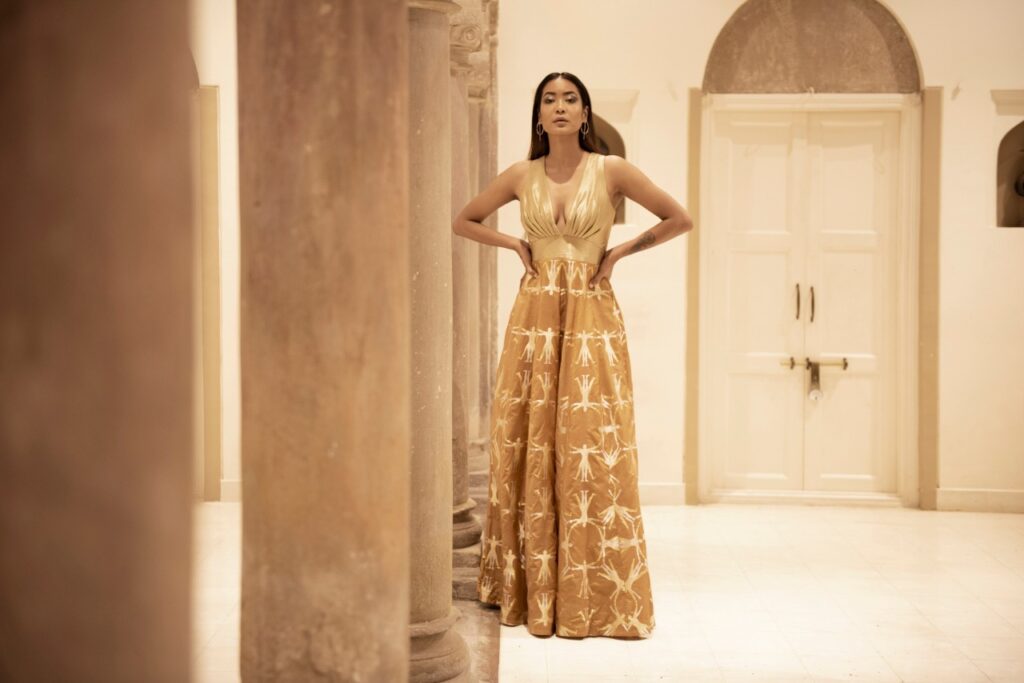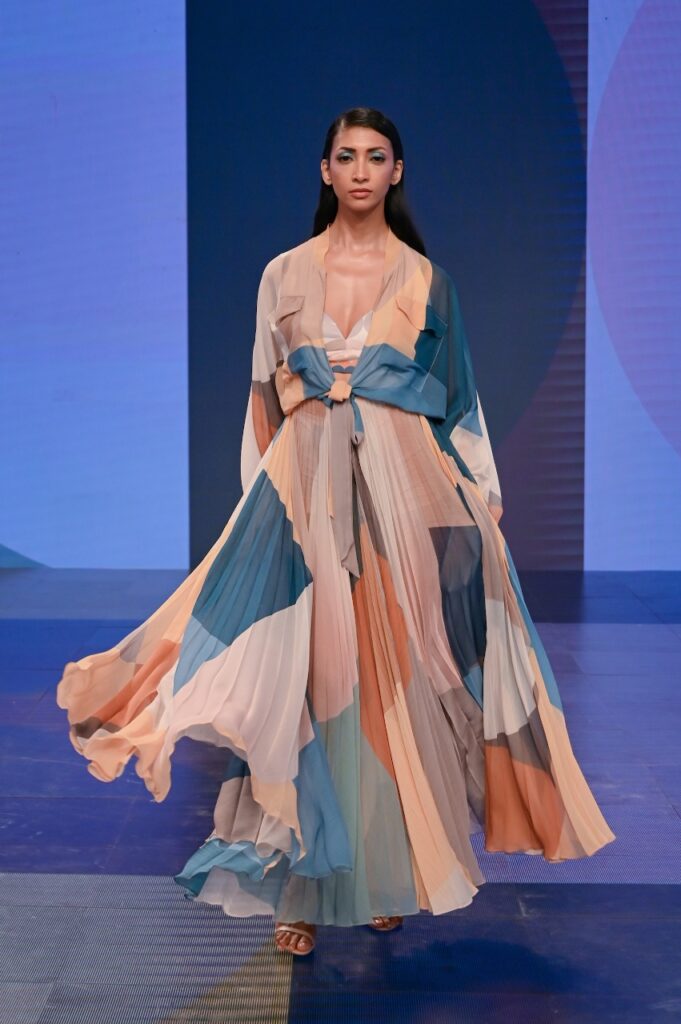
There is an unsavory truth behind all the glamour and glitz of the fashion industry — it is one of the most polluting globally. Eighty-five percent the clothes produced by fast fashion brands end up in landfills; the fashion industry is responsible for an estimated 10 percent of greenhouse gas emissions; textile dyeing is the second largest pollutant of water; and a report from the International Union for Conservation of Nature shows that 35 percent of all microplastic in the ocean is a result of laundering synthetic textiles.
Some Indian designers, however, are making an effort to lessen their impact on the environment. At the recently concluded virtual Lakme Fashion Week 2020 winter/festive edition, a few designers stood out for their innovative collections where a low carbon footprint, bio-degradable textiles, and ethical fashion, was the key.
“We as material makers want to stay true to our sustainability ethos and make our material and products without the use of pollutant chemicals, plastics, or over-exploitation of any resource,” said Zuzana Gombosva, co-founder, researcher and designer of Malai Biomaterials Design that showcased a range of accessories during Lakme Fashion Week.
Malai is a bio-composite material made from bacterial cellulose that is grown on water from mature coconuts. Winners of the Circular Design Challenge award, the brand created a vegan leather line made from Malai called Malabaricus.

“As consumers, we are used to materials and products of a certain quality and performance. But what we don’t often realize is the fact that these are the outcome of a long industrial tradition. Many materials have been treated with agents or chemicals to be stabilized or are embedded with petroleum-based ingredients,” said Gombosva.
Gombosva says that people desire biodegradable products but at the same time want a product that will last long, which is not always possible.
The name Malai comes from the white “flesh” of the tender coconut. The collection at LFW showcased wallets, pouches, belts, suspenders, handbags, backpacks, headgear, clutches, laptop bags, bracelets, and belt bags all made of the bio-composite material. All the accessories were paired with loose, unisex jackets, practical pants, shorts, and T-shirts.
Studies have shown that engagement in sustainability has deepened during the COVID-19 crisis. A consumer sentiment survey on sustainability in fashion reveals that 67 percent of consumers globally consider the use of sustainable materials to be important when purchasing clothing items.

The ‘Mishé’ brand created by the daughter and mother duo, Bhumika and Minakshi Ahluwalia, is aimed at the contemporary, fashion-forward women. Their collection “Shuwa” at the LFW featured a fabric base of banana fabric, orange peel fabric, recycled and hand-woven cotton as well as handwoven cotton jute.
“When I was launching my brand, I didn’t want people to come to me just because I make sustainable clothing but because the fabrics used and the designs are so good that sustainability is an added advantage,” says Bhumika. “It’s about choosing your path and we are slowly moving towards the right direction.”
“People have started veering towards a sustainable lifestyle, and when I tell them that an outfit is made from banana fiber or orange peel, they always appreciate it and want to know more,” said Bhumika.
Designers and researchers in the fashion industry are coming up with bio-compostable materials, which can be easily broken down once the product is not in use.

Designer Hemang Agrawal’s collection “Tattva,” at the LFW, was created in a Japanese fiber called Bemberg created by Asahi Kasei Corporation Japan. The collection unveiled the versatility of the Bemberg yarn for rich brocades and jacquards.
Bemberg is a regenerated fiber made from cotton linter (fine fibers that stick to the seeds of the cotton plant after ginning) . It is a biodegradable and compostable fiber that breaks down naturally after disposal.
While doing research for the collection, Agrawal found that the Bemberg yarn was lustrous, had strength, color depth, and a premium feel.
“We have tried to merge the skills of the weavers from Varanasi with the qualities of the Bemberg yarn to create textiles and apparel, which transcend the boundaries of what is termed traditional “Banarasi” (a rich brocade woven with gold and silver threads),” said Agarwal.
The collection had nearly 40 ensembles for men and women. The 12 “tattvas” or elements from Indian traditions and scriptures, influenced Agrawal’s creations.
“Sustainability has to be inherent, even if it is the invisible part of all processes involved in the making of a product,” says Agrawal.

(
Designers Pankaj & Nidhi created their “Talisman” collection in a fabric called GreenGold, which is made from 100 percent recycled plastic bottles.
“When we first heard about it, we imagined that it would be a very rough fabric but in reality, it is quite luxurious,” says Pankaj.
“People like the idea of sustainability but no one would buy a piece of clothing and wear it if it didn’t feel good on the skin,” said Pankaj. “Most people are willing to pay 10-20 percent extra for environment-friendly clothing because the garment comes with a feel-good factor.”
GreenGold feels like silk and the ensembles made of it are breathable, fresh, and flexible.
Pankaj & Nidhi’s line had zippered bomber jackets, jumpsuits, textured skirts, sheer, printed tops, long coats, bell-bottoms, cropped blouses and, maxis and jackets.
(Edited by Uttaran Das Gupta and Gaurab Dasgupta.)
The post Sustainable Fashion Stands Out at Lakme Fashion Week 2020 appeared first on Zenger News.
